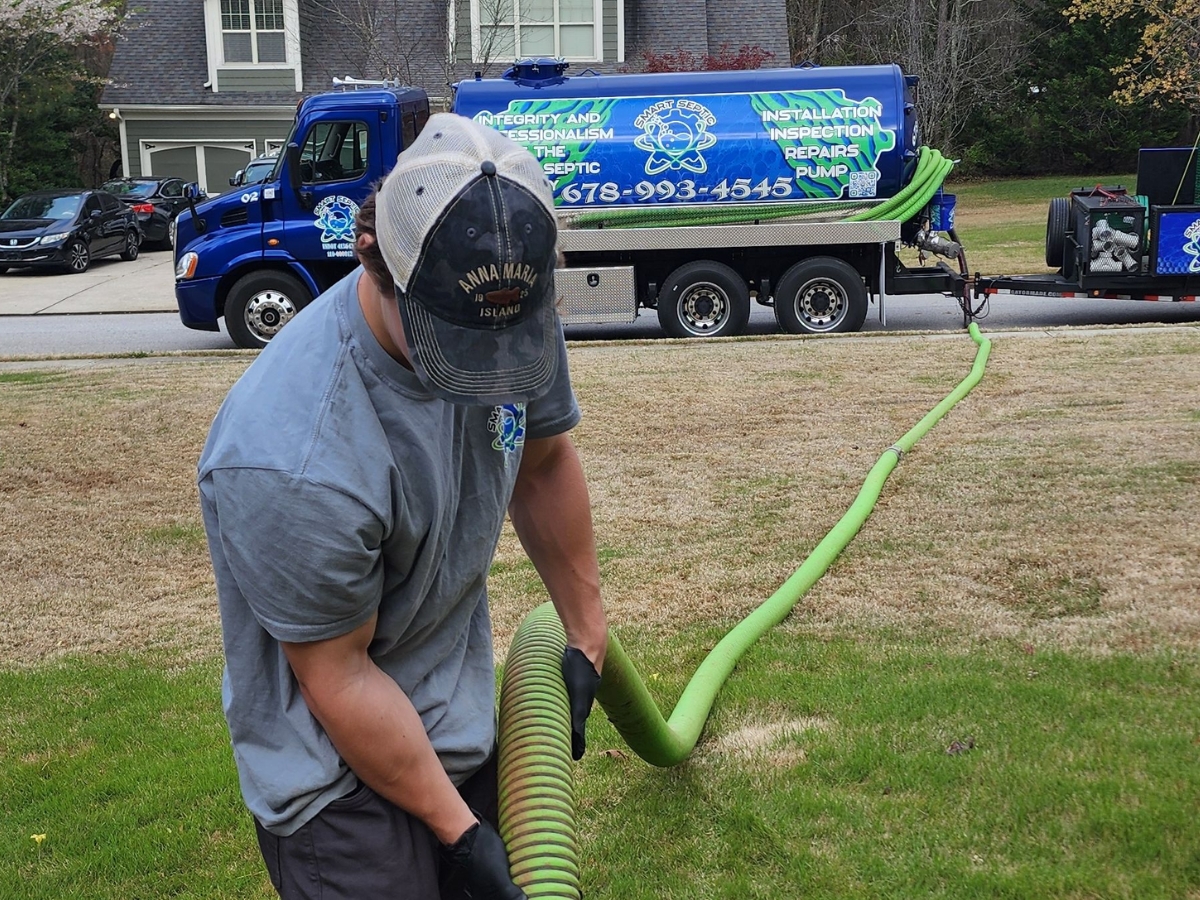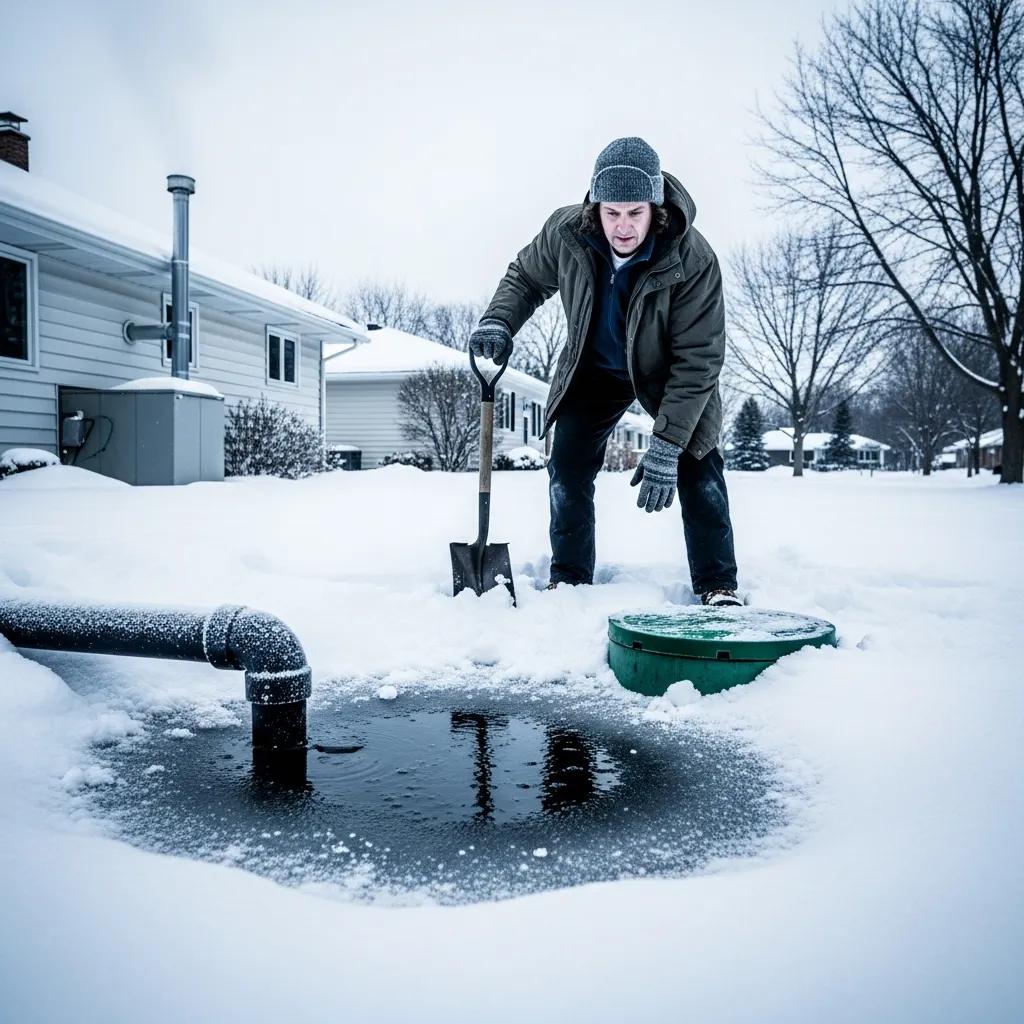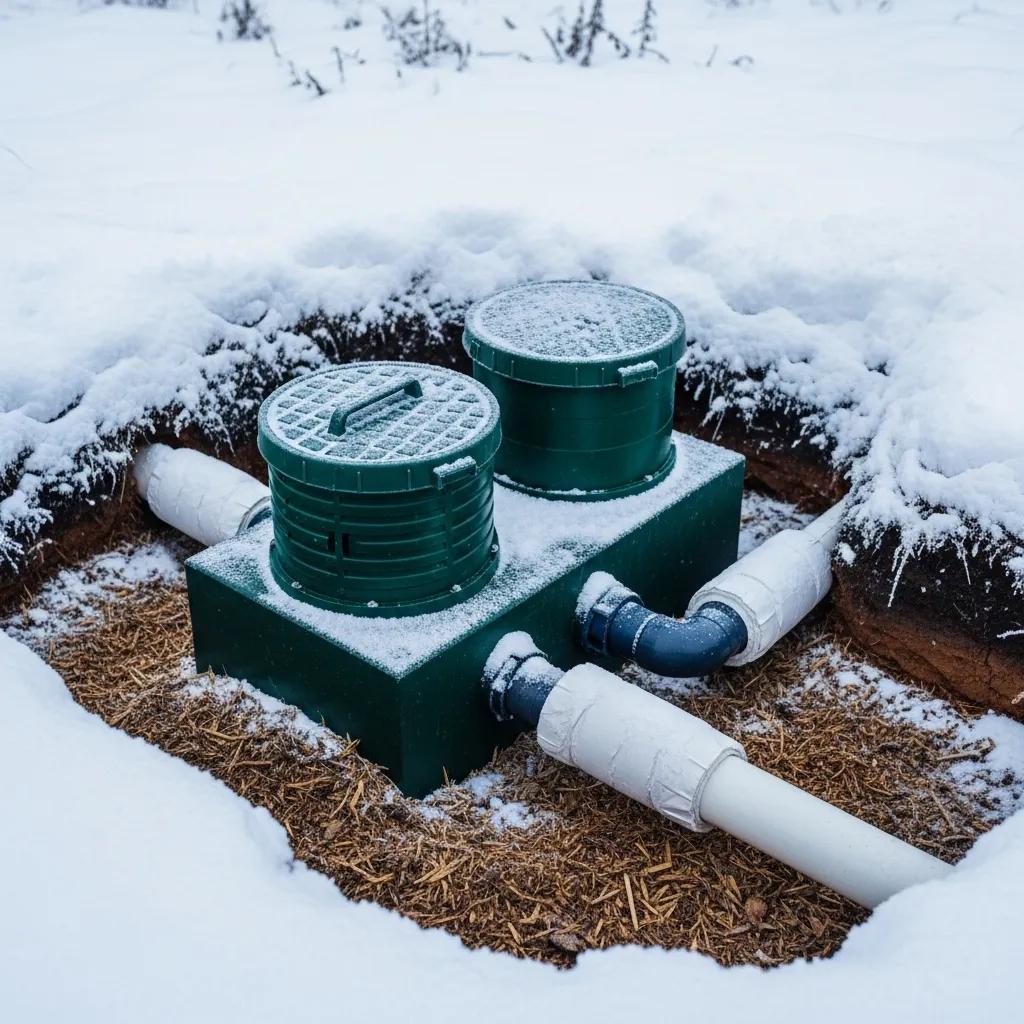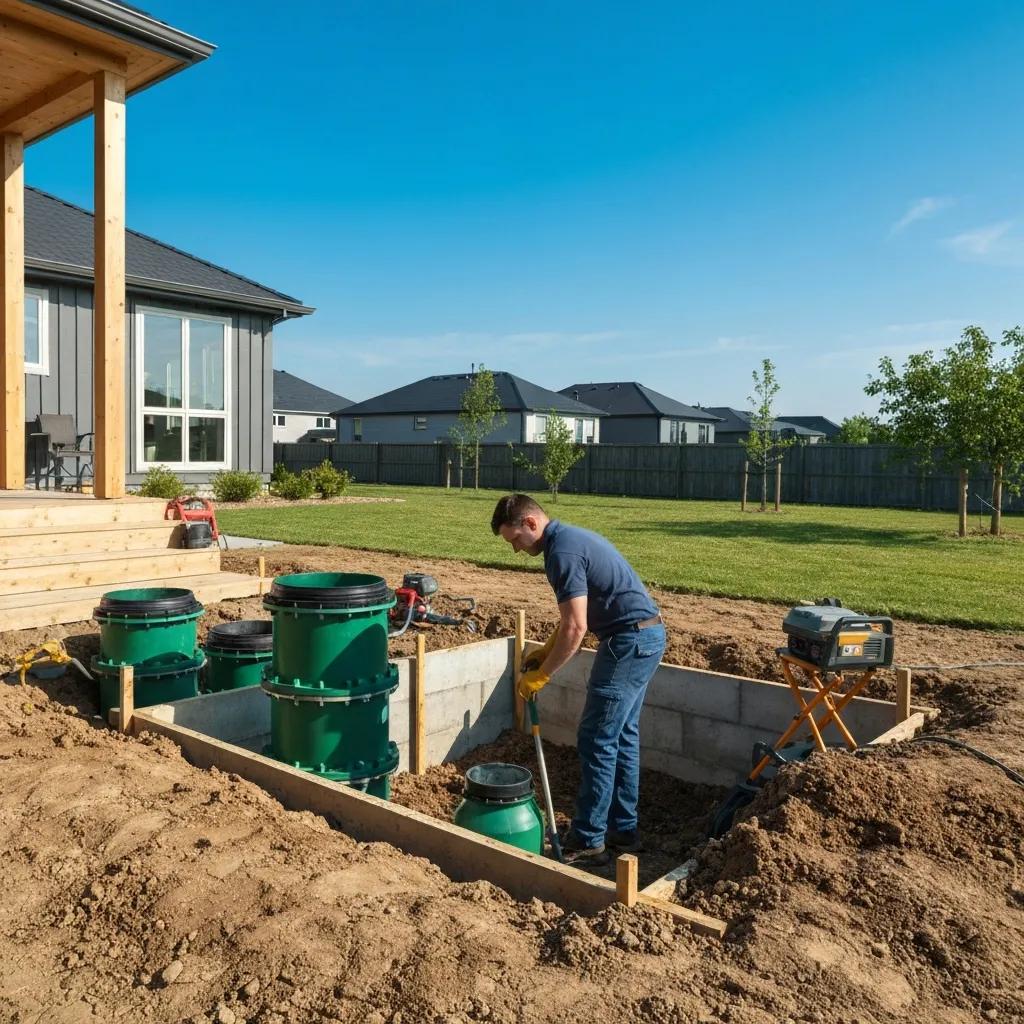Smart Septic Pros offers comprehensive septic tank services, including pumping, inspections, and repairs. Regular septic tank pump outs are crucial for maintaining a healthy system and preventing costly issues. Our expert technicians perform thorough septic tank inspections to identify potential problems early on, ensuring your system operates efficiently.
In this article, we’ll delve into the crucial steps involved in the septic tank pumping process, providing you with a clear understanding of what to anticipate when you reach out to us for this vital service. We’ll also shed light on the factors that influence septic tank pumping frequency, empowering you to make informed decisions about the maintenance of your septic system.
Septic Tank Pump Out Key Takeaways
What Steps Does the Septic Tank Pump Out Process Entail?
The septic pumping process involves several crucial steps to maintain a healthy septic system. From uncovering the access lids to the final inspection, each stage plays a vital role in ensuring proper septic tank maintenance. This comprehensive procedure not only removes accumulated sewage and sludge but also allows for a thorough assessment of the tank’s condition and the septic drain fields.
Whether dealing with a newly installed septic tank or an older system, regular Smart Septic Pros septic tank pumping is essential for preventing backups and extending the lifespan of the entire septic infrastructure. contact us for septic tank inspections, septic tank repairs, or septic tank installation.
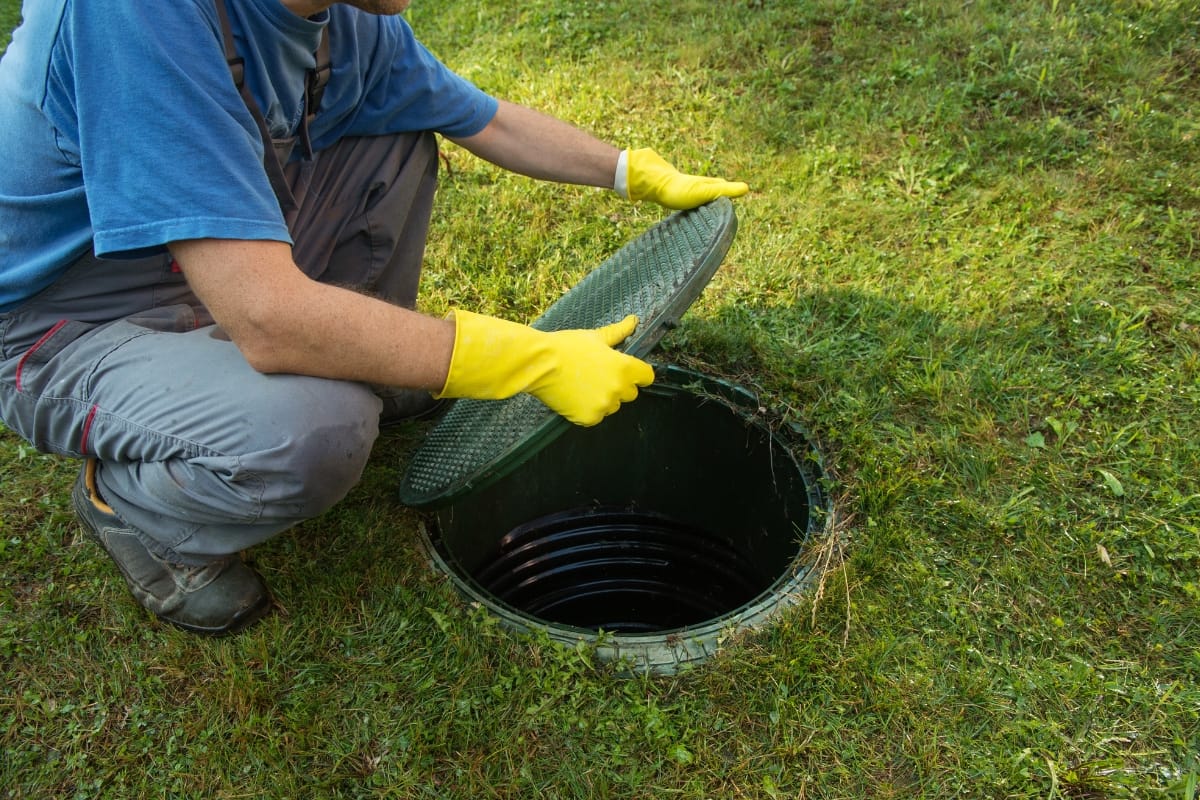
Step 1: Septic Tank Access Lids Uncovered and Opened
The septic pumping process begins with locating and exposing the septic tank access lids. Technicians carefully remove any soil or vegetation covering the lids, ensuring they can safely and easily open them. This step is crucial for gaining entry to the septic tank, allowing the pump truck to effectively remove accumulated waste and organic matter.
Once uncovered, the lids are carefully opened to reveal the contents of the septic tank. This action provides the first visual inspection opportunity, allowing technicians to assess the level of solids and liquids within the tank. Opening the lids also prepares the tank for the insertion of the pump hose, which will drain the contents and transport them to the sanitary sewer or an approved disposal facility.
Step 2: Your Tank Will Be Pumped Out
The pumping process begins as technicians lower a large hose into the septic tank. This powerful suction hose efficiently removes the accumulated waste, including liquids, solids, and sludge, transferring it to the vacuum truck for proper disposal. During this step, operators carefully monitor the process to ensure thorough removal of contents and prevent any potential soil contamination or leaks.
As the tank empties, technicians inspect for signs of damage or unusual conditions. They look for indications of structural issues, such as cracks or corrosion, which could lead to sewage treatment problems or even flooding. This comprehensive emptying and inspection process is crucial for maintaining the overall health of the septic system and preventing potential environmental hazards.
- Locate and uncover septic tank access lids
- Open lids and conduct initial visual inspection
- Insert pump hose and begin removal of tank contents
- Monitor pumping process for thoroughness and potential issues
- Conduct detailed inspection of tank interior
Step 3: The Tank Will Be Washed Out
After pumping out the septic tank, technicians perform a thorough washout to remove any remaining solids and debris. They use high-pressure water jets to clean the tank walls, baffles, and inlet and outlet pipes, ensuring optimal flow and preventing clogs in the drainage system. This step is crucial for maintaining the efficiency of the septic system and prolonging its lifespan.
The washout process also allows technicians to inspect the tank‘s interior more closely, checking for signs of damage or wear. They pay special attention to areas where effluent enters and exits the tank, ensuring proper flow and identifying any potential issues caused by excessive use of garbage disposal units. This comprehensive cleaning and inspection help prevent future problems and maintain the septic system’s overall health.

Step 4: Visual Inspections Will Take Place
After pumping and cleaning, technicians conduct a thorough visual inspection of the septic tank. They examine the tank‘s structure, looking for cracks, corrosion, or other damage that could compromise its integrity. The inspection includes checking the inlet and outlet baffles, ensuring they properly direct the flow of liquid and prevent sludge from entering the drain field.
Technicians also assess the levels of bacteria and sludge in the tank, which are crucial for breaking down waste. They inspect the sump pump if present, verifying its functionality to prevent backups into showers or other household fixtures. This comprehensive visual inspection helps identify potential issues before they escalate into major problems, ensuring the septic system’s longevity and efficient operation.
Step 5: The Tanks Lid Will Be Closed and Reburied
After completing the inspection and cleaning process, technicians carefully close the septic tank lid, ensuring a tight seal to prevent groundwater infiltration and potential contamination. They secure the lid properly, following guidelines set by the United States Environmental Protection Agency to maintain system integrity and protect the environment from harmful waste.
Finally, workers rebury the tank access point, restoring the area to its original condition. This step involves replacing soil and vegetation, taking care not to damage the tank or its components with heavy equipment. Technicians may also provide recommendations for landscaping practices that promote proper drainage and prevent issues like sink holes or oil runoff that could compromise the septic system’s effectiveness.
Septic Pump Out Frequently Asked Questions
How often should a u003cbu003eseptic tanku003c/bu003e be pumped?
Septic tanks typically require pumping every 3 to 5 years, depending on household size, water usage, and u003cbu003etanku003c/bu003e capacity. However, some systems may need more frequent pumping. Regular inspections by a professional can help determine the optimal pumping schedule for your specific septic system.
What are the signs that a u003cbu003eseptic tanku003c/bu003e needs pumping?
Signs that a u003cbu003eseptic tanku003c/bu003e needs pumping include slow draining fixtures, gurgling sounds in pipes, foul odors near drains or the u003cbu003etanku003c/bu003e area, u003cbu003esewageu003c/bu003e backups, and lush vegetation growth over the u003cbu003edrainu003c/bu003e field. Regular inspections and maintenance can help prevent these issues.
How long does the u003cbu003eseptic tanku003c/bu003e pumping process take?
The u003cbu003eseptic tanku003c/bu003e pumping process typically takes between 30 minutes to 2 hours, depending on u003cbu003etanku003c/bu003e size, u003cbu003eaccessibilityu003c/bu003e, and system condition. Experienced technicians can efficiently complete the job, minimizing disruption to the property owner’s daily routine while ensuring thorough cleaning and u003cbu003einspectionu003c/bu003e.
Can I use my plumbing during u003cbu003eseptic tanku003c/bu003e pumping?
During u003cstrongu003eseptic tanku003c/strongu003e pumping, it’s best to avoid using indoor plumbing. Water usage can interfere with the pumping process and potentially cause backups. Wait until the technician completes the job and gives the all-clear before resuming normal plumbing activities in your home or business.u003cbru003e
What should I do to prepare for u003cbu003eseptic tanku003c/bu003e pumping?
To prepare for u003cbu003eseptic tanku003c/bu003e pumping, locate and uncover the u003cbu003etanku003c/bu003e’s access lid, clear the area around it for easy truck access, and mark any underground utilities. Avoid using water in your home during the pumping process to ensure the u003cbu003etanku003c/bu003e is as empty as possible for effective cleaning.

Contact Smart Septic Tank for Your Septic Pump-Out
Septic tank pumping involves crucial steps that maintain system health and prevent environmental hazards. Technicians uncover and open access lids, pump out waste, clean the tank thoroughly, and conduct detailed inspections. This process removes accumulated solids, identifies potential issues, and ensures proper system function. Regular pumping extends the septic system’s lifespan, prevents backups, and protects both property and the environment.
Looking for septic pump-out services in Cartersville, Acworth, Marietta, or the metro Atlanta area? Choose Smart Septic Pros of Georgia for expert service that will ensure the longevity of your septic system. Don’t wait until issues arise; proactive maintenance is key to a well-functioning septic system.
Contact us now to schedule professional service and keep your tank in optimal condition. With our expertise and top-notch equipment, your septic pump-out process will be efficient and hassle-free. Trust Smart Septic Tank for all your septic system maintenance needs.
